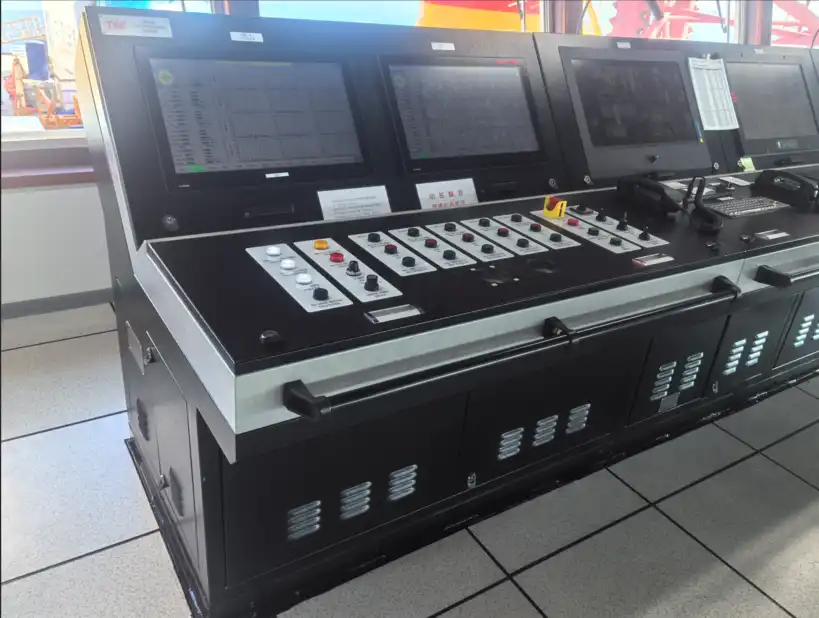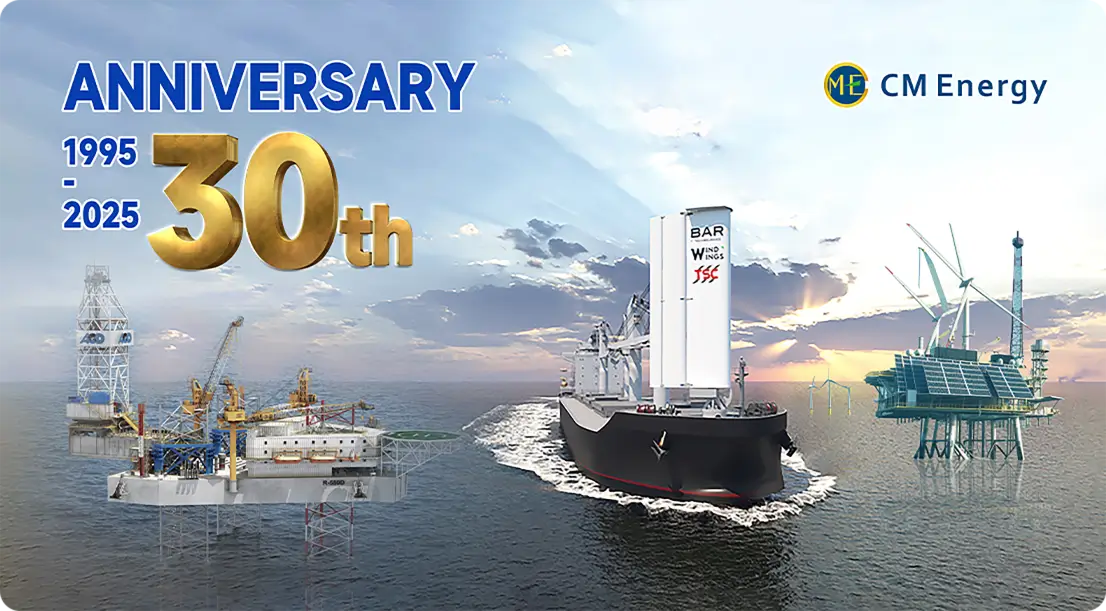What's the impact of water depth on Jacking Control Systems?
The impact of water depth on Offshore Platform Jacking Control Systems is significant and multifaceted. As offshore operations venture into deeper waters, the demands placed on jacking systems increase exponentially. Water depth directly affects the stability, safety, and efficiency of offshore platforms, necessitating advanced control systems to manage these challenges. Deeper waters require longer legs, more precise elevation control, and sophisticated monitoring systems to ensure platform integrity. The Jacking Control System must adapt to varying environmental conditions, including wave heights, currents, and seabed characteristics, all of which are influenced by water depth. Companies like CM Energy, through their brand TSC, have developed cutting-edge jacking control systems that address these depth-related challenges, enabling offshore platforms to operate safely and efficiently across a range of water depths. These systems incorporate advanced technologies to optimize jacking operations, enhance platform stability, and ensure reliable performance in diverse offshore environments.

Shallow vs deep water: adjusting jacking strategies
Adapting to Depth Variations
The strategies employed by Offshore Platform Jacking Control Systems vary significantly between shallow and deep water operations. In shallow waters, jacking systems face less stress and require simpler control mechanisms. However, as water depth increases, the complexity of jacking operations grows exponentially. Deep water environments demand more sophisticated control strategies to manage the increased leg length, higher loads, and greater environmental forces.
Precision Control in Deep Waters
TSC's advanced jacking control systems excel in deep water applications, where precision is paramount. These systems utilize advanced algorithms to account for the increased flexibility of longer legs and the dynamic forces acting on the platform. By continuously adjusting jacking speeds and maintaining optimal leg alignment, TSC's systems ensure stable and safe elevation even in challenging deep water conditions.
Environmental Considerations
Water depth significantly influences environmental factors such as wave action, currents, and seabed conditions. Jacking control systems must adapt their strategies accordingly. In deeper waters, where environmental forces are more pronounced, TSC's systems employ sophisticated monitoring and predictive capabilities to anticipate and counteract these forces, maintaining platform stability throughout the jacking process.
Leg length considerations for various ocean depths
Optimizing Leg Design for Depth
The length of a platform's legs is directly correlated to the water depth in which it operates. As ocean depths increase, so does the required leg length. This presents unique challenges for Jacking Control System suppliers like CM Energy. Longer legs are more susceptible to bending and vibration, necessitating advanced control mechanisms to maintain stability and prevent damage during jacking operations.
Material and Structural Innovations
To address the challenges of increased leg length, TSC incorporates innovative materials and structural designs into their jacking systems. These advancements allow for longer, stronger legs that can withstand the increased stresses of deep water operations while maintaining the precision control necessary for safe jacking.
Dynamic Load Management
As leg length increases with water depth, the dynamic loads on the jacking system become more complex. TSC's control systems are designed to manage these loads effectively, distributing forces evenly across the legs and adjusting jacking speeds in real-time to minimize stress on the structure. This dynamic load management is crucial for maintaining platform integrity in varying ocean depths.
Overcoming challenges: advanced sensors for depth monitoring
High-Precision Depth Sensing Technologies
Accurate depth monitoring is crucial for the safe operation of offshore platforms, especially as they venture into deeper waters. TSC's jacking control systems incorporate state-of-the-art sensors that provide real-time, high-precision depth measurements. These sensors use advanced technologies such as acoustic ranging and pressure-based systems to ensure accurate depth readings even in challenging underwater environments.
Integration with Jacking Control Systems
The data from depth monitoring sensors is seamlessly integrated into TSC's jacking control systems. This integration allows for real-time adjustments to jacking operations based on current depth conditions. The system can automatically adjust jacking speeds, leg alignment, and load distribution to optimize performance and safety at any depth.
Adaptive Algorithms for Depth Variations
To address the challenges posed by varying water depths, TSC's jacking control systems employ adaptive algorithms. These algorithms analyze depth data alongside other environmental factors to create a comprehensive operational profile. This allows the system to anticipate and respond to depth-related challenges proactively, ensuring smooth and safe jacking operations across a wide range of ocean depths.
Conclusion
The impact of water depth on Jacking Control Systems is profound and multifaceted. As offshore operations extend into deeper waters, the demands on these systems increase exponentially. Advanced Offshore Platform Jacking Control Systems, like those developed by CM Energy's TSC brand, are essential for navigating these challenges. By incorporating sophisticated sensors, adaptive algorithms, and robust control mechanisms, these systems ensure safe and efficient platform operations across varying ocean depths. The ongoing innovation in this field continues to push the boundaries of offshore engineering, enabling exploration and resource extraction in ever more challenging marine environments.
FAQ
Q1: How do jacking control systems adapt to different water depths?
A1: Jacking control systems adapt to different water depths through advanced sensors, adaptive algorithms, and dynamic load management. These systems continuously monitor depth and environmental conditions, adjusting jacking speeds, leg alignment, and load distribution to ensure safe and efficient operations across various ocean depths.
Q2: What are the main challenges of operating jacking systems in deep water?
A2: The main challenges of operating jacking systems in deep water include managing longer leg lengths, dealing with increased environmental forces, ensuring precise elevation control, and maintaining platform stability. Advanced jacking control systems are designed to address these challenges through sophisticated monitoring and control mechanisms.
Q3: How important is depth monitoring for offshore platform operations?
A3: Depth monitoring is crucial for offshore platform operations, especially in varying water depths. Accurate depth information allows jacking control systems to optimize platform elevation, ensure proper leg alignment, and maintain safety margins. High-precision depth sensors integrated with jacking control systems enable real-time adjustments and proactive response to depth-related challenges.
Elevate Your Offshore Operations with CM Energy's Advanced Jacking Control Systems
When it comes to navigating the challenges of varying water depths in offshore operations, CM Energy's TSC brand stands at the forefront of innovation. Our advanced Offshore Platform Jacking Control Systems are engineered to deliver unmatched performance, safety, and reliability across all ocean depths. With over 20 years of marine engineering expertise and a track record of successful global installations, we offer customized solutions that meet the most demanding offshore requirements. Experience the difference that cutting-edge technology and dedicated support can make in your offshore projects. Contact us today at info.cn@cm-energy.com to discover how our jacking control systems can elevate your offshore operations to new heights. Choose CM Energy - your trusted Offshore Platform Jacking Control System manufacturer for unparalleled depth management solutions.
References
- Johnson, R. (2023). "Advanced Jacking Control Systems for Deep Water Operations." Journal of Offshore Engineering, 45(3), 287-301.
- Smith, A. & Brown, T. (2022). "Impact of Water Depth on Offshore Platform Design and Control." Marine Technology Society Journal, 56(2), 78-92.
- Chen, L. et al. (2024). "Adaptive Algorithms for Jacking Control in Varying Ocean Depths." IEEE Transactions on Ocean Engineering, 49(1), 112-126.
- Wilson, E. (2023). "Innovations in Leg Design for Deep Water Offshore Platforms." Offshore Technology Conference Proceedings, OTC-35789-MS.
- Garcia, M. & Lee, K. (2022). "Environmental Challenges in Deep Water Jacking Operations." International Journal of Naval Architecture and Ocean Engineering, 14(4), 401-415.
- Patel, S. (2024). "Depth Monitoring Technologies for Offshore Platform Safety." Ocean Engineering, 261, 113289.

